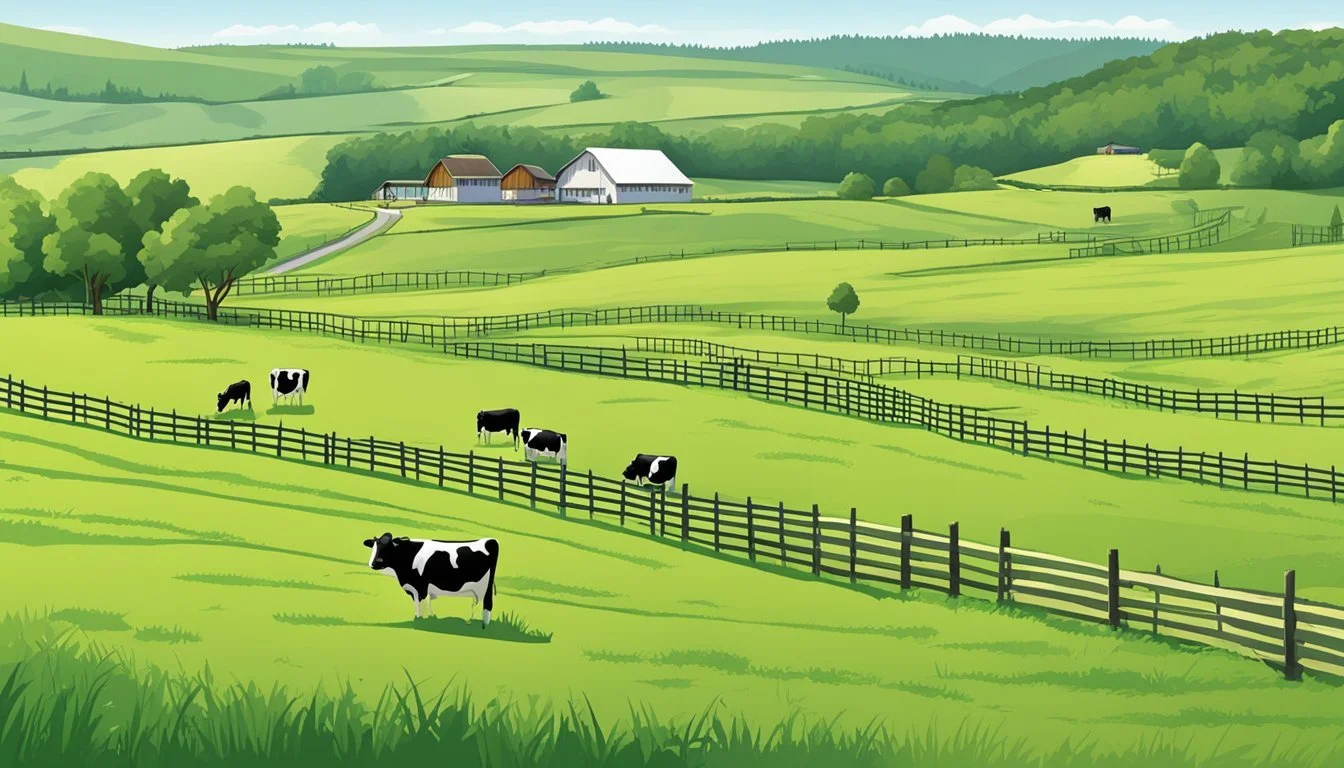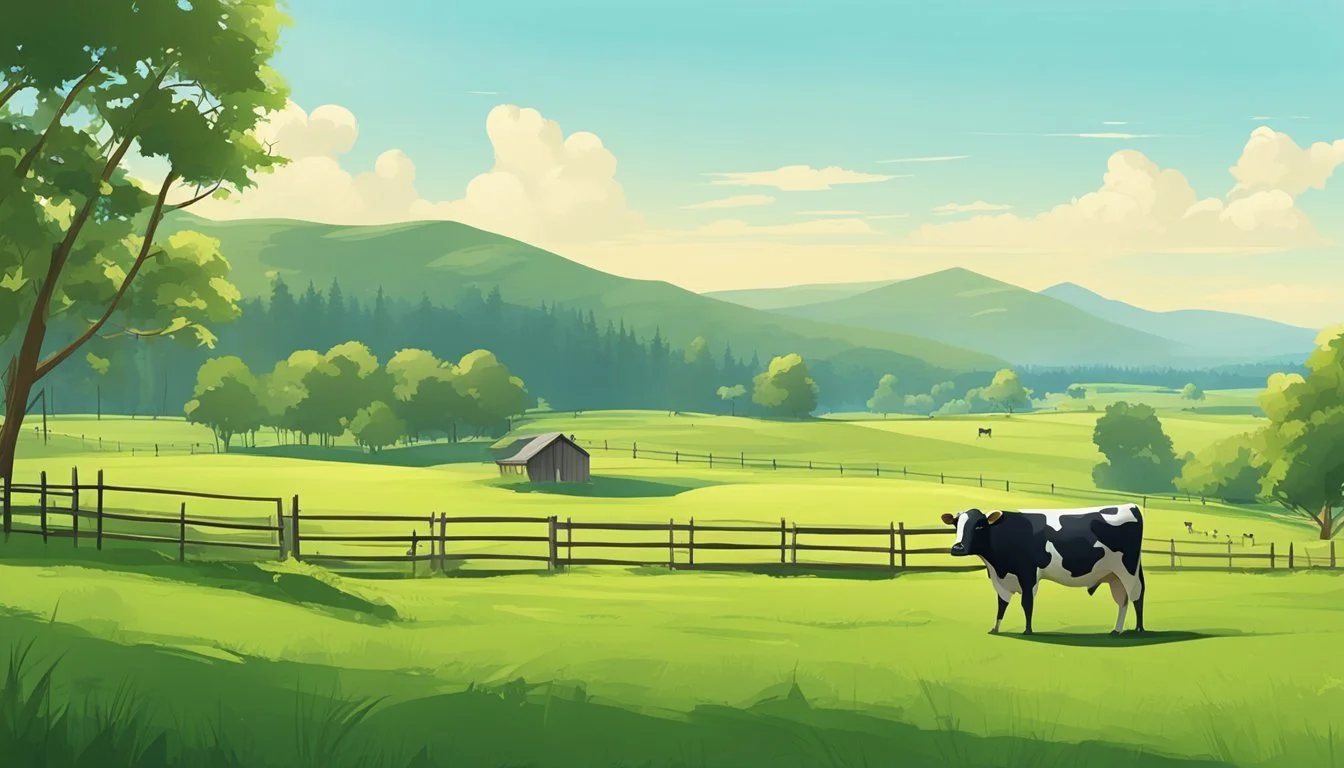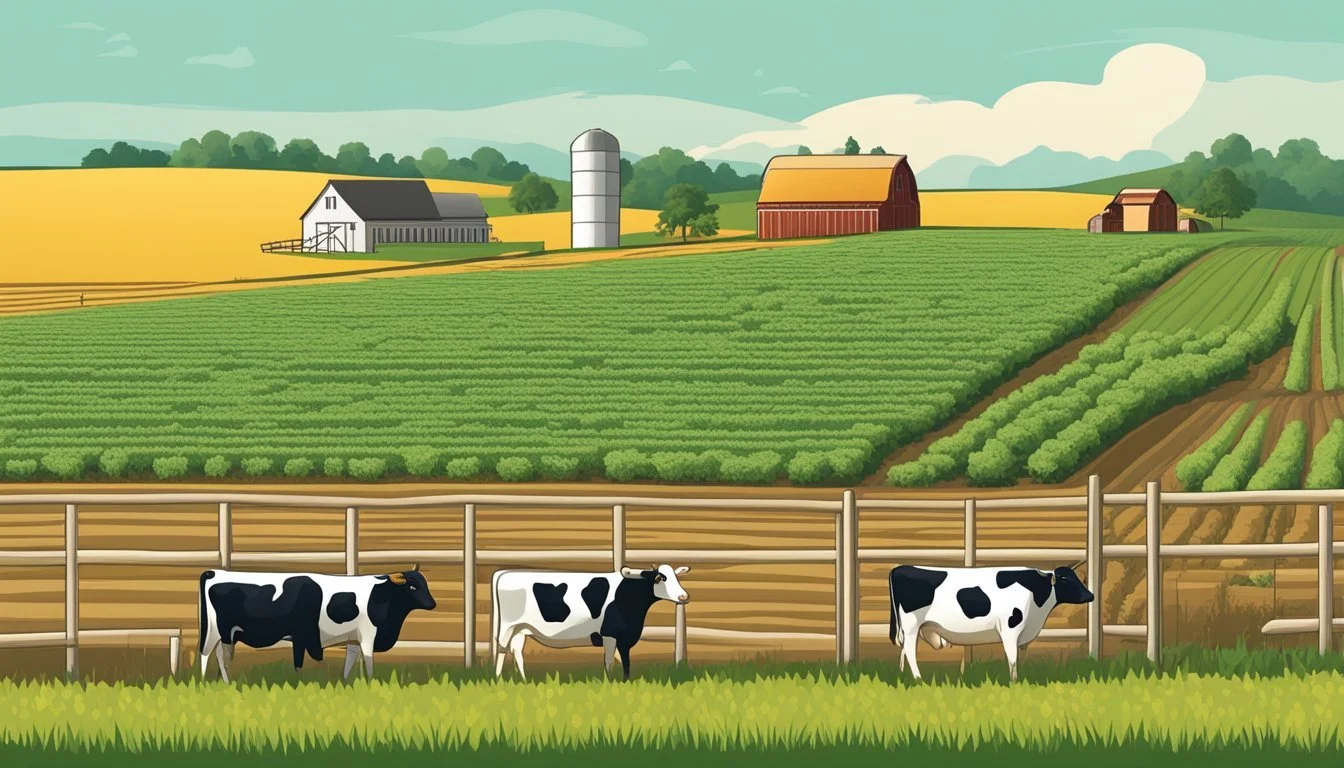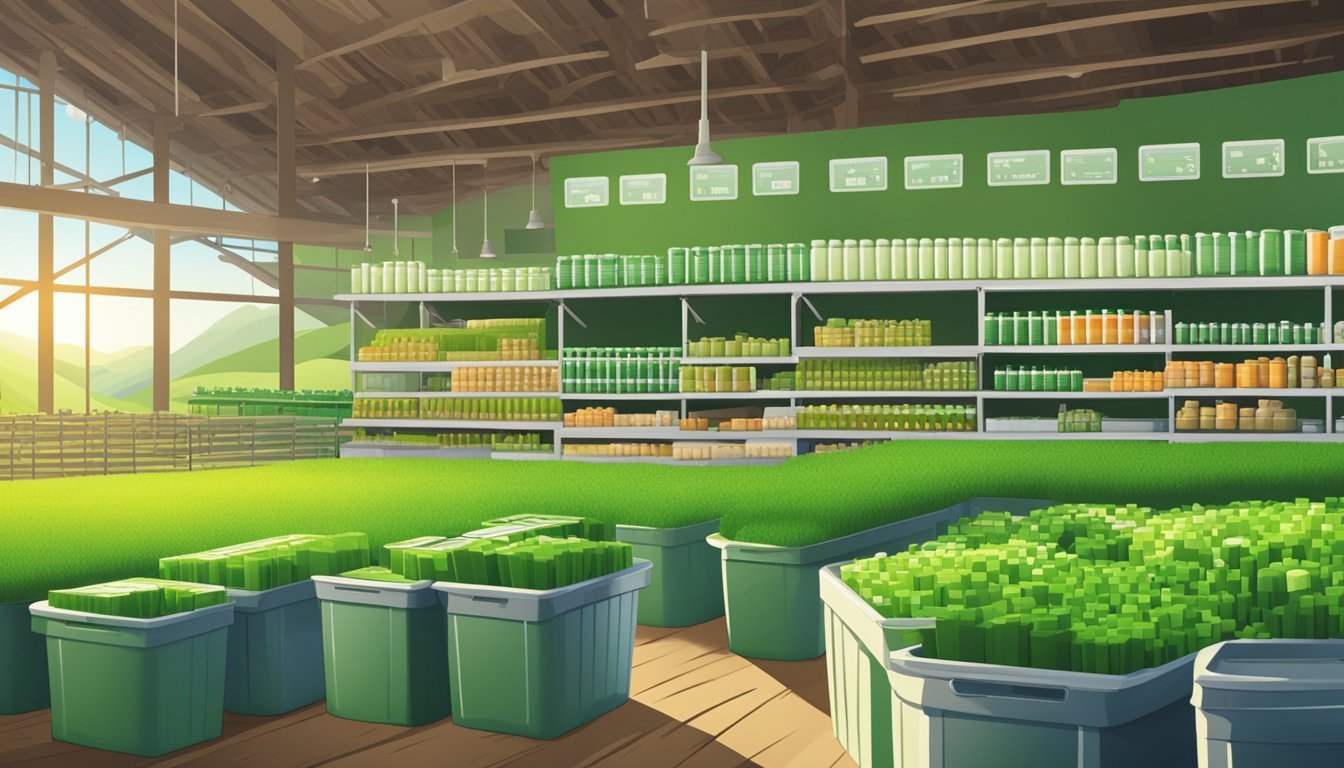Stocking Rate Iowa
Determining Optimal Cows Per Acre on Your Land
Determining the appropriate stocking rate is essential for sustainable livestock production in Iowa. Stocking rate, essentially the number of cows a land manager can sustain per acre without harming the environment, directly influences the health of the pasture, the well-being of the herd, and the profitability of the farm. It is a fine balance between the forage availability and the nutritional needs of cows, taking into account that different classes and sizes of cows have varying dietary requirements.
In Iowa, as elsewhere, the specific number of cows per acre that a property can support fluctuates based on a myriad of factors including forage type, pasture management, soil fertility, and rainfall. A generalized approach does not suffice for accurate calculations given that forage production can dramatically differ not only from one region to another but also from year to year. Land managers must weigh these factors and may benefit from consulting local extension services or agricultural programs for detailed assessments and guidance.
To calculate a precise stocking rate in Iowa, it involves assessing the productive capabilities of the property and the objectives of the grazing operation. This translates into understanding the amount of forage an acre of pasture can produce and the length of the grazing season, as well as the specific needs of the herd. By adopting a strategic approach to stocking, Iowa's livestock producers can ensure the sustainability of their grazing systems and the long-term health of their livestock and land.
Understanding Stocking Rate
Stocking rate is a fundamental concept in livestock management that directly impacts the sustainability and productivity of grazing systems. It is vital for farmers to balance livestock numbers with the available forage to maintain a healthy ecosystem.
Defining Stocking Rate and Carrying Capacity
Stocking rate refers to the number of livestock units that can be sustainably maintained on a given area of land over a specific period. It is often expressed as animal unit months (AUM) or animal units per acre per year (AU/acre/year). Carrying capacity is the maximum number of animals the land can support without causing environmental degradation, considering factors like forage availability and land health.
Animal Unit (AU): Commonly defined as one 1,000-pound cow with or without a calf.
Importance of Stocking Rate in Grazing Management
The stocking rate is a crucial element of grazing management because it determines how intensely livestock utilize the pasture. An optimal stocking rate ensures that cattle have enough forage throughout the grazing season, which prevents overgrazing, maintains forage quality, and supports livestock health. It takes into consideration:
The type of livestock,
Local climate conditions,
Forage types and growth rates,
Land management practices.
Adjusting stocking rates to match the carrying capacity of the land helps preserve soil integrity, water quality, and biodiversity, which are essential for the long-term sustainability of agricultural operations.
Assessing Pasture Condition
Before introducing livestock, it's crucial to assess pasture condition comprehensively, focusing on forage production capabilities, soil health, and plant biodiversity to ensure a sustainable stocking rate.
Evaluating Forage Production
Forage production is a primary indicator of a pasture's ability to support livestock. Specific measurements, such as Stock Days per Acre (SDAs) or Animal Days per Acre (ADAs), estimate the grazing capacity. For example, in Iowa's diverse climate, pasture inventory management becomes essential, factoring in seasonal growth rates and forage availability to determine the carrying capacity confidently.
Soil Quality and Health
Soil quality directly influences the vitality of grasses and forage plants. Essential aspects include nutrient content, pH levels, and composition (clay, loam, silt, sand). Healthy soil should promote robust root systems and sustain adequate moisture, thereby supporting a higher density of forage. Regular soil testing and tailored management practices ensure soil health is preserved, hence supporting a consistent forage supply.
Grass and Plant Biodiversity
Biodiversity within a pasture contributes to ecosystem resilience and forage stability. Ideal pastures involve a mix of grass species, legumes, and other forage plants to supply varied nutrition and sustain livestock throughout the grazing season. Diverse plant life can also improve soil health and reduce pest and disease outbreaks, ultimately maintaining a pasture in good condition for optimal livestock support.
Calculating Livestock Demand
When determining how many cows a property in Iowa can support, farmers must calculate the forage demand per Animal Unit, and adjust for variations in cattle breed and type. This ensures a balance between livestock production and pasture sustainability.
Determining Forage Demand per Animal Unit
Forage demand is the amount of pasture required to maintain one Animal Unit (AU) for a specific period. An AU is typically defined as a 1000-pound cow. The standard forage demand in Iowa generally assumes that:
Iowa Pastureland: Typically supports 2.5 to 4.0 AU per acre annually
The specific forage demand depends on factors such as forage quality and availability, which are influenced by soil fertility, precipitation, and pasture management practices. Farmers should assess their pasture's productivity and align it with the standard AU to gauge their land's carrying capacity.
Adjustments for Cattle Breed and Type
Different cattle breeds and types have varying nutritional needs and thus, the concept of an AU can be adjusted:
Dairy Cows: May require more forage due to higher milk production
Beef Breeds: Such as Angus, Hereford, or Charolais may require different forage amounts based on average adult weight
For example, a 1400-pound beef cow might represent 1.4 AU, needing proportionally more forage than a standard AU. Adjustments for breed types should be calculated to account for the livestock's weight and dietary needs, ensuring that each animal's nutritional requirements are adequately met without overburdening the pasture.
Grazing Strategies
When managing cattle in Iowa, understanding and choosing the right grazing strategies are crucial for optimizing pasture health and carrying capacity.
Rotational Versus Continuous Grazing
Rotational grazing involves dividing pastures into smaller areas, known as paddocks, and moving livestock through them in a sequence. This method allows grass to recover before cattle return to graze again, reducing the potential for overgrazing. In Iowa, for example, producers might rotate cattle to a new paddock every few days or weekly, depending on the forage availability and growth rate.
On the other hand, continuous grazing keeps cattle in a single pasture area for an extended period, which can sometimes lead to overgrazed and bare spots, especially during times of stress such as droughts. Continuous grazing may also lower the overall forage quality and quantity if not carefully managed, as cattle tend to favor certain areas and plants.
Implementing Multi-Species Grazing
Multi-species grazing integrates different types of livestock, such as cows and sheep, on the same pasture. Each species has different grazing behaviors and preferences, which can lead to a more uniform use of the forages. For instance, cattle might graze the taller grasses while sheep can help control weeds.
This system can help improve the efficiency of pasture utilization and reduce the parasite load for each species since many internal parasites are host-specific. In Iowa's diverse grazing systems, multi-species grazing can be incorporated into both rotational and continuous grazing plans, but it is typically more effective in a well-managed rotational system.
Environmental Considerations
When calculating stocking rates in Iowa, it's essential to consider how environmental factors, particularly climate and soil conditions, affect pasture sustainability.
Climate Impact on Grazing
Iowa's climate, characterized by its seasonality and rainfall patterns, is a primary determinant of pasture productivity. Stocking rates must take into account the Natural Resources Conservation Service (NRCS) guidelines, which consider the impact of climate on forage availability. For instance, higher precipitation can lead to ample forage growth, supporting a higher stocking density. Conversely, during drier seasons or in drought conditions, forage production declines, necessitating a reduction in the number of cows per acre to prevent overgrazing.
Soil Degradation and Desertification
The health of Iowa's soil is vital to support a sustainable number of cows per acre. Overstocking can lead to soil degradation, compaction, and, in extreme cases, desertification — the process where fertile land becomes desert. To prevent these outcomes, the stocking rate must be managed carefully, considering the soil's ability to recover and maintain its structure and nutrients. The Natural Resources Conservation Service provides guidance on managing grazing pressure to ensure the long-term health and productivity of the land. It's crucial to monitor soil conditions and adjust stocking rates to align with the soil's carrying capacity, thereby preserving this natural resource.
Planning and Record Keeping
When assessing a property’s capacity to support livestock in Iowa, meticulous planning and record-keeping are integral components to ensure optimal utilization without degrading pasture resources. These practices help ranchers make informed decisions and adjust management strategies effectively.
Creating a Pasture Inventory
A pasture inventory is vital for determining the number of cows an acre can support. Ranchers typically collaborate with local NRCS (Natural Resources Conservation Service) offices to help with this process, which involves:
Mapping all grazing areas, accounting for the variety of forage types and quality.
Assessing soil fertility and potential forage production.
Documenting improvements like fencing, water sources, and shade, which affect stocking density.
Farmers should update their pasture inventory annually as changes in forage quality, and environmental conditions can alter carrying capacities.
Monitoring Grazing Utilization Rates
Utilization rates indicate how much forage livestock consume relative to what is grown. Effective monitoring includes:
Regular observation of the rate at which cows consume the available pasture.
Adjustments to the stocking rate to prevent overgrazing, which can reduce future forage production and pasture health.
Records of grazing utilization rates guide ranchers to schedule rotations and rest periods, balancing livestock needs with pasture recovery times.
Nutrition and Supplements
To ensure a sustainable stocking rate and optimal cattle health, farmers must assess forage quality and determine the necessity for supplements, in addition to integrating nutrient-rich crops into their pastures.
Assessing Forage Quality and Supplements Need
Forage quality is pivotal to cattle nutrition and varies based on plant species, soil fertility, and stage of growth. Farmers should regularly test their forage for protein content, energy levels, and digestibility. When forages do not meet the nutritional requirements, supplements become necessary. Common options include:
Protein supplements: Soybean meal, cottonseed meal, or commercial protein blocks.
Energy supplements: Corn, barley (how long does barley last?), or high-energy commercial feeds.
Mineral supplements: Salt blocks and mineral mixes specific to regional deficiencies.
Assessment tools such as forage analysis can guide the type and quantity of supplements needed.
Integrating Crops like Rye, Clover, and Alfalfa
Incorporating different crops into pasture rotations can enhance forage quality and reduce the need for supplements. Each crop offers unique benefits:
Rye: Fast-growing, providing early spring forage and extending the grazing season.
Clover: Fixates nitrogen, improving soil fertility and offering high protein forage.
Alfalfa: High in protein and energy, valuable for lactating cows or growing calves.
Farmers can plant these crops in a mixture or in separate areas to allow for rotational grazing, which can further improve pasture health and cattle nutrition.
Economic Aspects of Cattle Ranching
In cattle ranching, profitability hinges on optimizing land usage while mitigating the risks of overgrazing, which involves judicious management of resources and recovery strategies.
Maximizing Profitability Through Efficient Land Use
The pursuit of profitability in cattle ranching demands efficient land utilization to support the desired number of cattle per acre. This efficiency ensures that the cattle population does not exceed the ecological carrying capacity of the land, allowing for sustainable production. Appropriate stocking rates are pivotal, as they vary significantly across different regions. In Iowa for example, factors such as soil fertility, pasture management, and local climate conditions play a crucial role in determining the ideal number of cows per acre that a property can support sustainably.
Stocking Rate: Optimal rates must balance the number of cattle with available forage.
Feed Efficiency: Incorporating rotational grazing and supplementing natural forage can enhance feed efficiency.
Manure Management: The strategic use of manure as fertilizer can contribute to soil health, leading to improved forage production and thus higher profitability.
Cost Management: Effective budgeting for feed, veterinary services, labor, and equipment helps control expenses and maximize revenue.
Cost of Overgrazing and Land Recovery
Overgrazing severely impacts ranch profitability and sustainability. It leads to soil erosion, reduced pasture productivity, and the need for expensive recovery measures.
Soil Degradation: Overgrazed pastures lose plant cover, exposing soil to erosion and decreasing its fertility.
Recovery Costs: Restoring overgrazed land involves reseeding, which incurs costs for seeds and labor.
Reduced Productivity: Overgrazing results in poorer quality forage, which affects cattle growth rates and overall production.
Increased Expenses: Overgrazed systems often require more supplemental feeding, increasing operational costs.
Ranchers must diligently monitor grazing patterns and adjust stocking rates accordingly to prevent overgrazing. The implementation of recovery plans is imperative to renew overgrazed pastures, involving rest periods, proper manure management, and potentially introducing hardier plant species suited for recovery.
By adhering to these practices, ranchers can maintain the health of their pastures, supporting the long-term economic viability of their operations.








